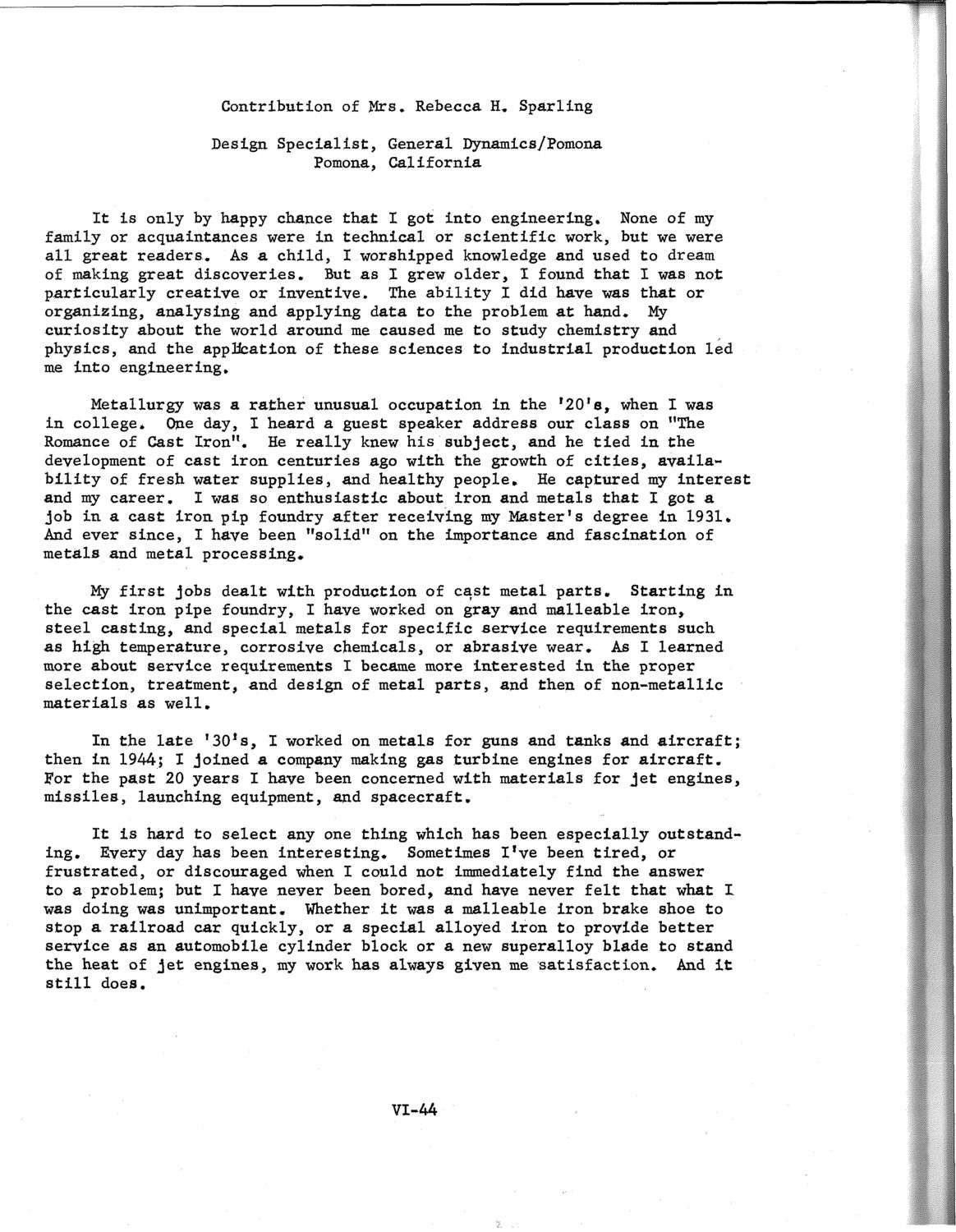| |
| |
Caption: SWE - Proceedings of the First International Conference of Women Engineers and Scientists
This is a reduced-resolution page image for fast online browsing.

EXTRACTED TEXT FROM PAGE:
Contribution of Mrs. Rebecca H. Sparling Design Specialist, General Dynamics/Pomona Pomona, California It is only by happy chance that I got into engineering. None of my family or acquaintances were in technical or scientific work, but we were all great readers. As a child, I worshipped knowledge and used to dream of making great discoveries. But as I grew older, I found that I was not particularly creative or inventive. The ability I did have was that or organizing, analysing and applying data to the problem at hand. My curiosity about the world around me caused me to study chemistry and physics, and the application of these sciences to industrial production led me into engineering. Metallurgy was a rather unusual occupation in the '20's, when I was in college. One day, I heard a guest speaker address our class on "The Romance of Cast Iron". He really knew his subject, and he tied in the development of cast iron centuries ago with the growth of cities, availability of fresh water supplies, and healthy people. He captured my interest and my career. I was so enthusiastic about iron and metals that I got a job in a cast iron pip foundry after receiving my Master's degree in 1931. And ever since, I have been "solid" on the importance and fascination of metals and metal processing. My first jobs dealt with production of cast metal parts. Starting in the cast iron pipe foundry, I have worked on gray and malleable iron, steel casting, and special metals for specific service requirements such as high temperature, corrosive chemicals, or abrasive wear. As I learned more about service requirements I became more Interested in the proper selection, treatment, and design of metal parts, and then of non-metallic materials as well. In the late '30*8, I worked on metals for guns and tanks and aircraft; then in 1944; I joined a company making gas turbine engines for aircraft. For the past 20 years I have been concerned with materials for jet engines, missiles, launching equipment, and spacecraft. It is hard to select any one thing which has been especially outstanding. Every day has been interesting. Sometimes I've been tired, or frustrated, or discouraged when I could not immediately find the answer to a problem; but I have never been bored, and have never felt that what I was doing was unimportant. Whether it was a malleable iron brake shoe to stop a railroad car quickly, or a special alloyed iron to provide better service as an automobile cylinder block or a new superalloy blade to stand the heat of jet engines, my work has always given me satisfaction. And it still does. VI-44
| |